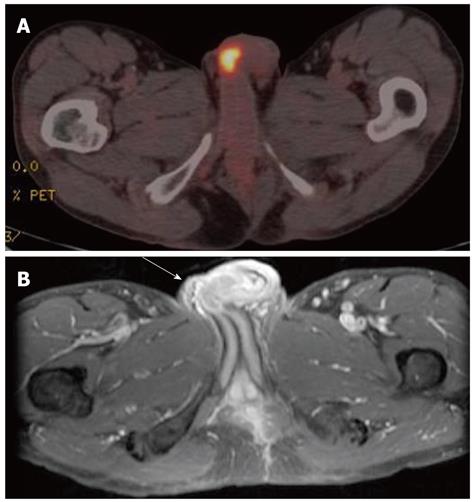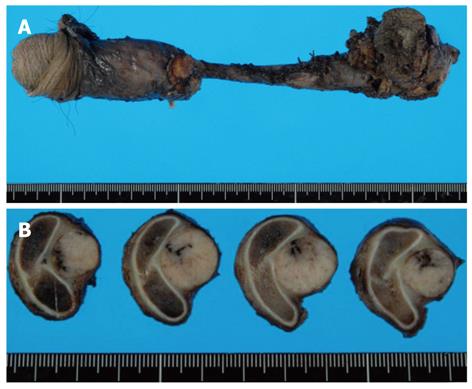Copyright
©2012 Baishideng Publishing Group Co.
World J Gastroenterol. Oct 14, 2012; 18(38): 5476-5478
Published online Oct 14, 2012. doi: 10.3748/wjg.v18.i38.5476
Published online Oct 14, 2012. doi: 10.3748/wjg.v18.i38.5476
Figure 1 Positron emission tomography and magnetic resonance imaging image.
A: Positron emission tomography/computed tomography showing high 18-F fluorodeoxyglucose uptake in the penis; B: Gadolinium-enhanced fat-suppressed T1-weighted image showing a low intensity lesion on the middle penis shaft (white arrow).
Figure 2 Resected specimen showing penile metastasis.
A: Total penectomy with all the residual urethra; B: The tumor was localized in the corpus spongiosum, and had almost completely replaced it.
Figure 3 Histopathological findings of the tumor.
A histopathological examination revealing well differentiated adenocarcinomas in the corpus spongiosum (A) with negative staining for cytokeratin 7 (B) and positive staining for cytokeratin 20 (C) by immunostaining.
- Citation: Kimura Y, Shida D, Nasu K, Matsunaga H, Warabi M, Inoue S. Metachronous penile metastasis from rectal cancer after total pelvic exenteration. World J Gastroenterol 2012; 18(38): 5476-5478
- URL: https://www.wjgnet.com/1007-9327/full/v18/i38/5476.htm
- DOI: https://dx.doi.org/10.3748/wjg.v18.i38.5476















